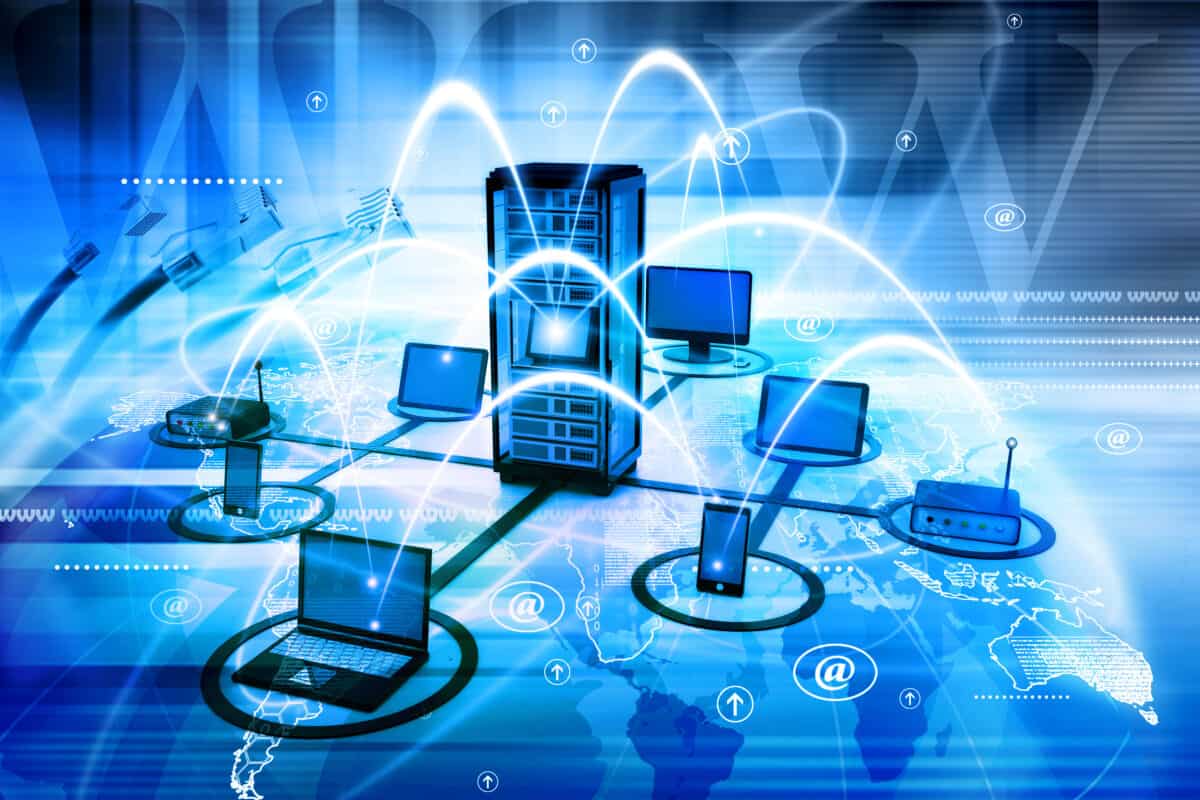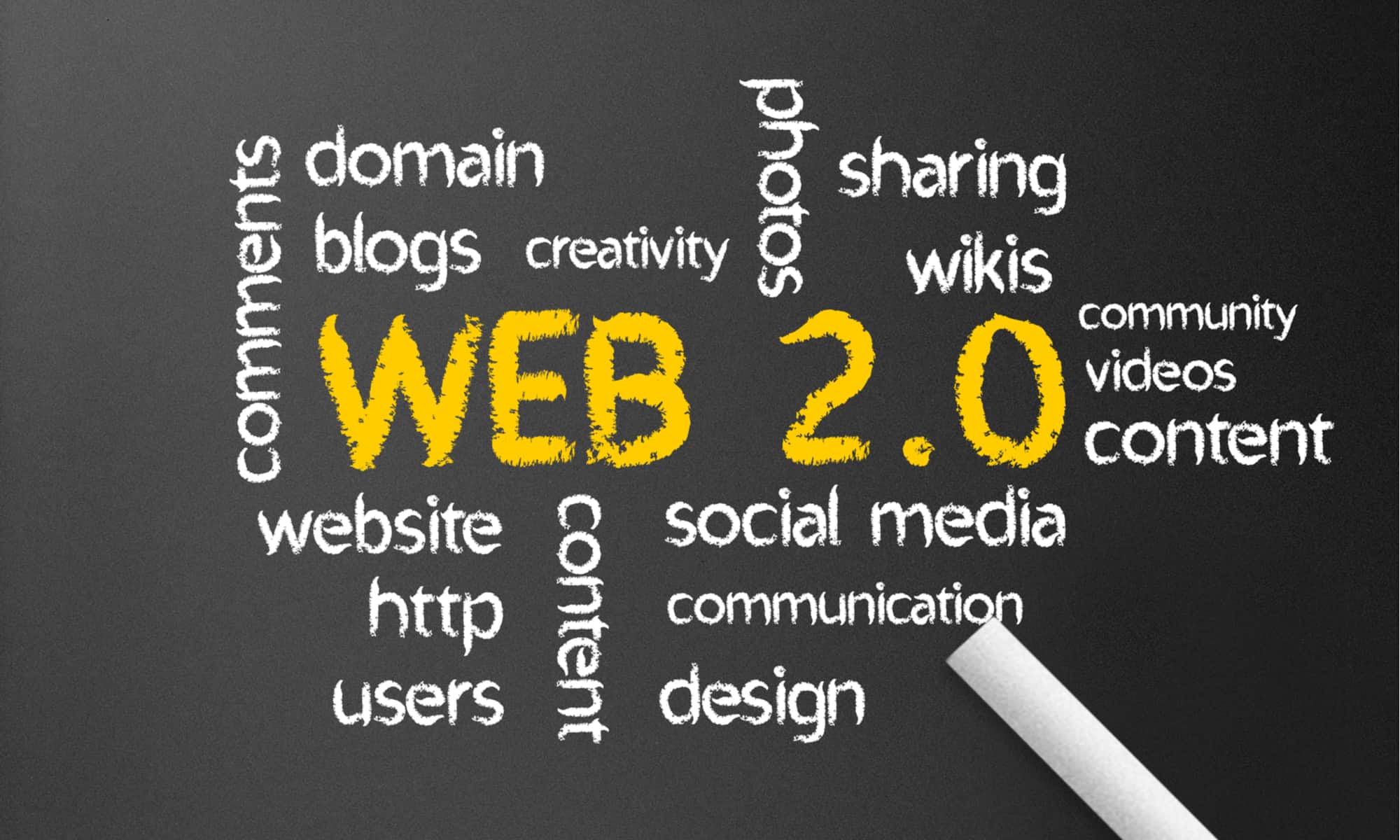Web 2.0 is the name given to the current web that we use today. It was an evolution of the internet from a static, one-way communication channel to a dynamic and interactive platform that now allows users to engage with content in various ways. With the expansion of Web 2.0, websites have become more intuitive and feature-rich, enabling users to contribute their own content, share and collaborate with others, and participate in online communities. This provides countless possibilities for businesses, individuals, and organizations alike, as they can connect with audiences in more direct and innovative ways.
What Is Web 2.0? A Complete Explanation
The earliest websites were part of what is known as the “read-only web,” or Web 1.0. While they offered plenty of information and were accessible to users across the world, these pages had little or no functionality, flexibility, or user-generated content.
The name “Web 2.0” seems to indicate an updated version of the current World Wide Web, which is known as Web 1.0. It’s more accurate to think of Web 2.0 as a shift in thinking and focus on web design. Instead of static HTML pages with little or no interaction between users, Web 2.0 represents a shift to interactive functionality and compatibility through some of the following features:
- User-generated content
- Transparency in data and integrations
- The Web as a platform, not just a network
- Software as a service (SaaS) through API implementation technology
Web 2.0: An Exact Definition
Web 2.0 is the second generation of the World Wide Web. It focuses on the web as a platform and offers more opportunities for collaboration, functionality, various applications, and user-generated content. It is the World Wide Web as it is used today.

How Does Web 2.0 Work?
Another way to think of this reshaping of the World Wide Web is called the “read/write” web. Since this reframing of the internet, web users have been able to communicate in real-time with servers, edit web pages, post comments, and communicate with other users. Here are just a few categories to help you understand this major shift in the way the web is used.
Social Web
Thanks to hypertext transfer protocol (HTTP) and other innovations, Web 2.0 acts as a social web. Users can add comments, like pages, submit reviews, and create social media accounts for increased levels of interaction. All of this user-generated content dramatically increases opportunities for communication across all users.
Marketing Capabilities
Web 2.0 allows for automated processes and improved productivity in all forms of communication, including marketing technology. This allowed for blogs, Google Ads, and other forms of marketing to become more present and effective at connecting with audiences.
Web-Delivered Services
Another major shift from Web 1.0 was the introduction of Application Programming Interfaces (APIs). These allow applications to talk to each other, introducing the Software as a Service (SaaS) model. This promoted greater interactivity between web development companies, applications, and users.
How Do You Create Web 2.0?

While Web 2.0 is more of a change in thinking rather than a truly updated version of the World Wide Web, there are a few key web technologies that introduced this massive shift in the way users viewed and interacted with web pages. Here are just a few examples of this technology and its improved compatibility:
- JavaScript
- Adobe Flash
- Microsoft Silverlight
- RSS
- Eclipse
- Ajax
Where Did Web 2.0 Originate From?
When Time Berners-Lee invented the World Wide Web in 1989, it was primarily used for static HTML pages. This version of the web, known now as Web 1.0, was about as interactive as pages in a book. This continued until the dot-com boom and then the crash that occurred roughly between 1997 and 2001.
In 2004, not long after the burst of the dot-com bubble, the concept of Web 2.0 was born. The term is believed to have been first used in 1999 by Darcy DiNucci but grew significantly in popularity at the Web 2.0 Conference held by Dale Dougherty and Tim O-Reily in 2004.
What Are the Applications of Web 2.0?
Web 2.0 has taken over a large portion of all internet usage. The popularity of collaboration and user-generated content has left the static HTML pages of Web 1.0 feeling dated and obsolete. Here are just a few common ways that these changes in thinking about the internet are applied today.
Software as a Service
Many leading software applications have transitioned to a SaaS model with compatibility across various devices. From professional software for your business like Salesforce, Microsoft, and Adobe Creative Cloud to Netflix, Zoom, and Spotify, SaaS is a common model that offers web-based software applications on demand for a monthly subscription.
Blogs
Personal, professional, and corporate blogs rely on the interactive and user-generated features of Web 2.0. Bloggers can not only easily create new web pages to share up-to-date information but users can like, share, and comment on posts to increase engagement for your business or personal use.
Social Media Networks
The pinnacle of interactivity and user-generated content implementation, social media networks allow every user to easily share content, chat with other users, and respond to new content in real time. Popular networks such as Twitter, Instagram, Facebook, and TikTok, are some of the most highly visited sites on the web.
Video and Image Sharing Sites
YouTube, TikTok, Google Photos, Flickr, and other websites highlight the ease of sharing videos and images with Web 2.0. These sites increase multimedia interaction between users to change the way the internet is used to communicate.

Examples of Web 2.0 in the Real World
The popularity of Web 2.0 means that much of what is considered the Internet is a Web 2.0 innovation. Explore these examples of real-world applications that leverage the change in focus brought about by Web 2.0.
The search engine, along with Google Ads, relies heavily on user interaction. The search engine process continues to be refined, globally and personally, as you search for websites and interact with web pages. Google also offers a number of web-based applications for your business or personal use in the Google Suite.
Wikipedia
This popular site offers user-generated encyclopedia entries. This site allows ongoing editing and refining of definitions, histories, and examples of all types of knowledge. It also highlights one of the dangers of the implementation of Web 2.0, as the content on Wikipedia is open to vandalism and intentionally incorrect entries.
Twitter is a social media platform that allows users to share their thoughts and ideas in 280 characters or less. Its design encourages quick engagement. Users can like, retweet, and reply to tweets posted by others. Twitter is used for both personal and social connections, as well as for breaking news and information sharing, with everyone from government officials to celebrities using it to communicate directly with their audiences.
Along with Twitter, Instagram, and other social media channels, Facebook highlights the exponential user interaction available through the social web. All of those instant messages, shares, likes, comments, and friend requests were virtually unthinkable during the days of Web 1.0.








